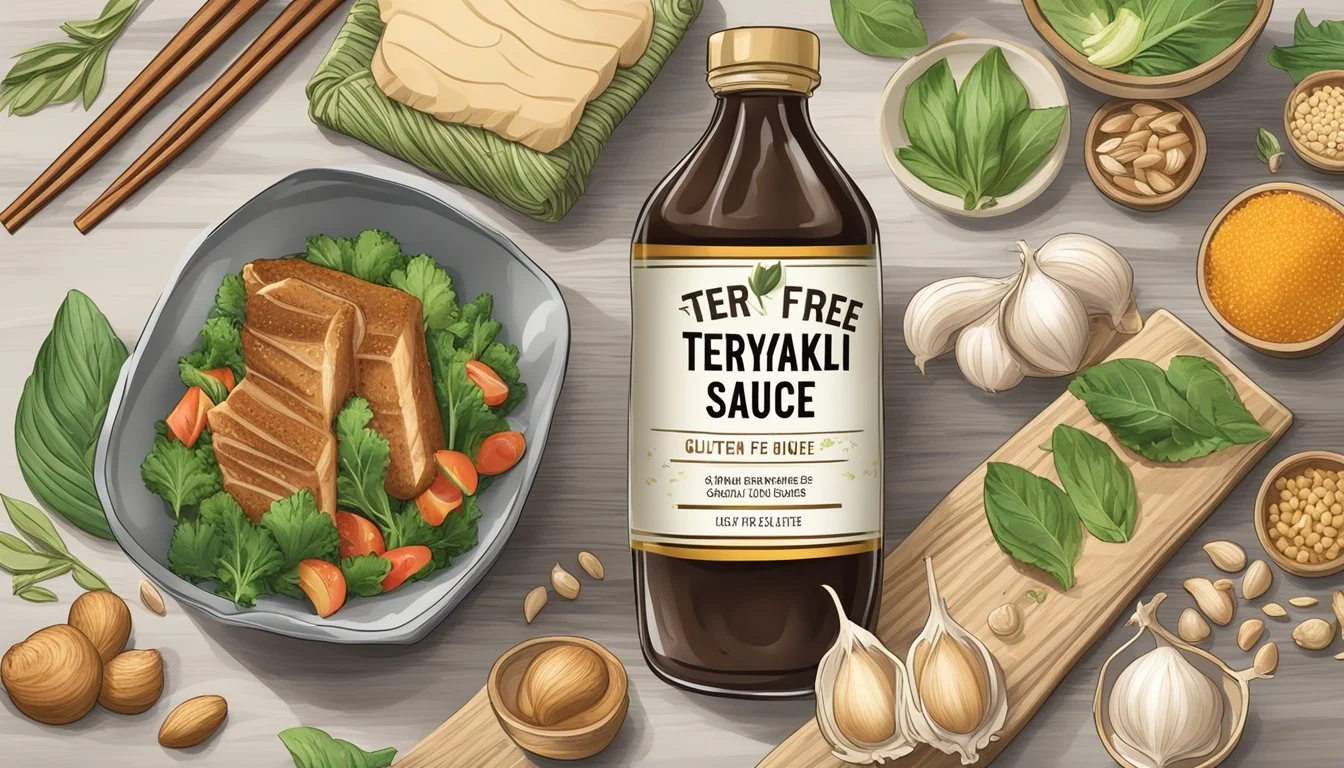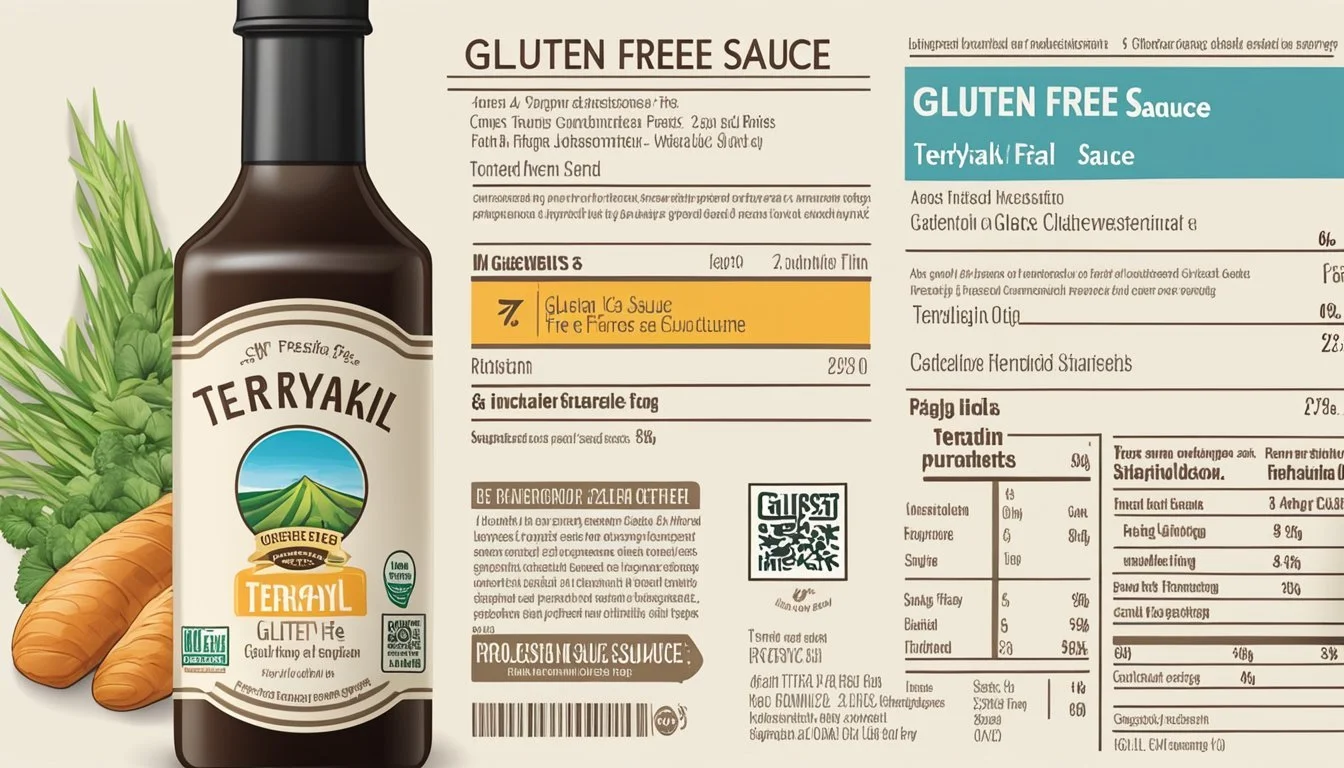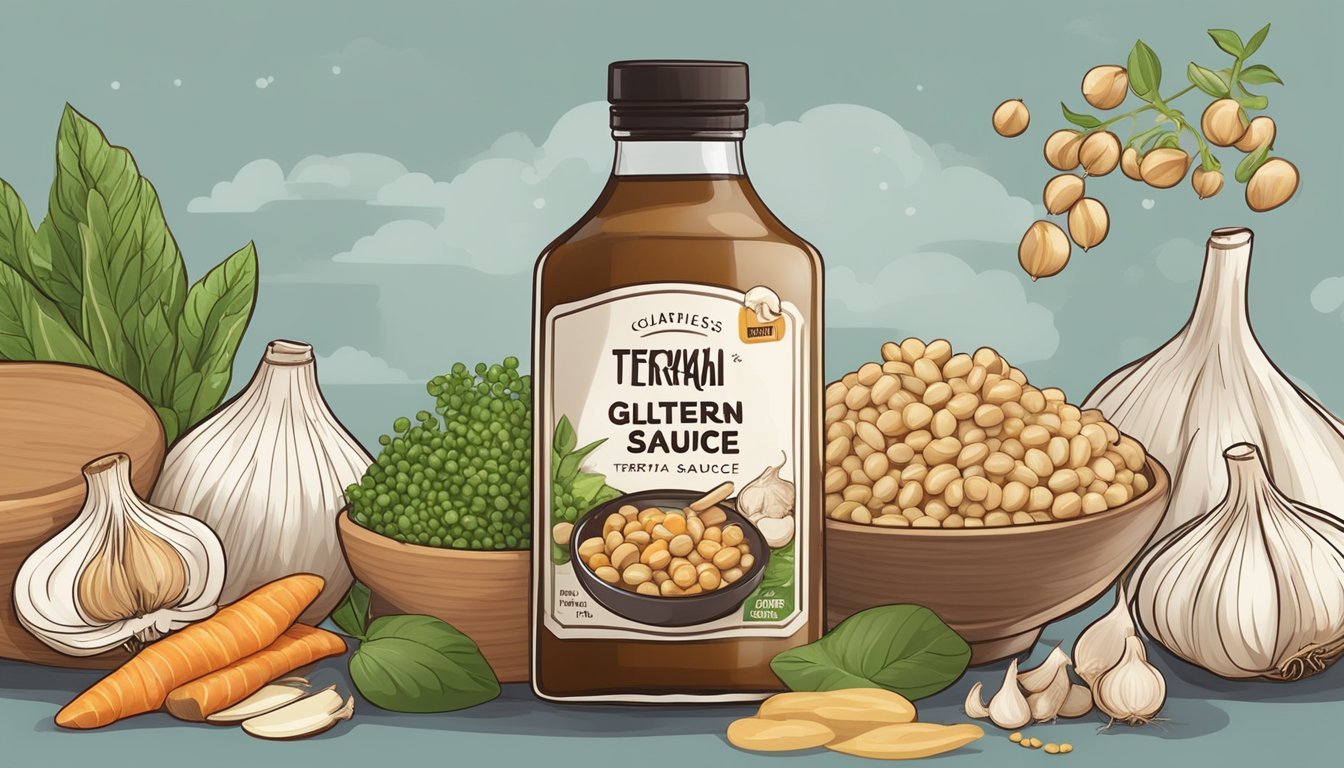Is Teriyaki Sauce Gluten-Free?
Unveiling the Truth About This Popular Condiment
Teriyaki sauce, with its sweet and savory blend, is a popular condiment often used to marinate and glaze a variety of dishes, especially in Japanese cuisine. This sauce typically includes ingredients like soy sauce, sugar, vinegar, and a mix of garlic and ginger. Traditionally, teriyaki sauce derives its rich umami flavor from soy sauce, which is made from fermented wheat and soy.
However, the presence of wheat in conventional soy sauce renders most traditional teriyaki sauces not gluten-free. Gluten, a group of proteins found in wheat, barley, and rye, can cause health issues for individuals with celiac disease or gluten sensitivity. As a result, those adhering to a gluten-free diet need to be cautious about the teriyaki sauce they choose.
The increasing awareness and need for gluten-free options have led to the development of gluten-free teriyaki sauces. These are often made with tamari—a soy sauce alternative that usually doesn't contain wheat—and other gluten-free ingredients. As alternatives to soy sauce, products like tamari and coconut aminos provide similar flavors without the gluten content, making it possible for gluten-free teriyaki sauces to be just as delicious and versatile as their traditional counterparts.
Understanding Teriyaki Sauce
Teriyaki sauce is a traditional Japanese condiment used in various dishes to add a savory and slightly sweet flavor profile. It is typically made from a combination of soy sauce, sugar, and seasonings.
Origin and Traditional Ingredients
Teriyaki sauce originated in Japan. The name "teriyaki" derives from the noun teri, which refers to a shine or luster given by the sugar content in the sauce, and yaki, which refers to the cooking method of grilling or broiling. The traditional teriyaki sauce is a simple blend of ingredients, each contributing to the sauce's distinct taste:
Soy sauce: Forms the base, providing umami and saltiness.
Sugar: Adds sweetness and helps create a glaze.
Ginger: Gives the sauce a warm, spicy kick.
Garlic: Offers a strong, aromatic flavor.
This combination results in a balance of flavors unique to teriyaki sauce.
Commercial Teriyaki Sauce Varieties
In the commercial market, teriyaki sauce has evolved with a variety of formulations. Ingredients may vary, but common additions include:
Mirin: A sweet rice wine for added sweetness and luster.
Sake: Japanese alcohol that can enhance flavor depth.
Cornstarch: Often included as a thickening agent.
Shapes and sizes of commercial teriyaki sauce offerings vary, some being gluten-free and others tailored to specific dietary needs. Manufacturers may substitute the traditional soy sauce with alternatives like tamari to cater to gluten-free diets. This substitute is typically made from fermented soybeans, is darker and slightly thicker than regular soy sauce, but still offers the umami flavor central to teriyaki sauce.
Gluten Content in Teriyaki Sauce
Teriyaki sauce commonly contains gluten due to the presence of soy sauce, which is traditionally brewed with wheat. However, there are specific brands that offer gluten-free teriyaki sauce, suitable for those adhering to a gluten-free diet.
Role of Soy Sauce in Gluten Presence
The primary source of gluten in teriyaki sauce is soy sauce, an essential ingredient in traditional teriyaki recipes. Soy sauce typically includes wheat as a core component, contributing to its rich flavor and color. Gluten, a protein found in wheat, rye, and barley, poses a significant concern for people with gluten sensitivities or celiac disease. It's crucial for consumers to examine ingredients lists carefully when selecting teriyaki sauces, to avoid inadvertent gluten consumption.
Identifying Gluten-Free Teriyaki Sauce Brands
Seeking out gluten-free teriyaki sauce, especially among store-bought options, requires scrutiny of labels for certifications and ingredient transparency. Gluten-free teriyaki sauces often utilize alternative ingredients that mimic the complex flavors of traditional soy sauce without the gluten. These ingredients include:
Tamari: A type of soy sauce made without wheat and is naturally gluten-free.
Coconut aminos: A soy sauce substitute that is also free from gluten.
To aid consumers, below is a concise list of factors to consider when choosing a gluten-free teriyaki sauce:
Gluten-Free Certification: Look for official gluten-free labeling on the package.
Alternative Ingredients: Check for non-wheat-based soy sauces like tamari or coconut aminos.
Additives: Be cautious of any added thickeners or flavor enhancers, which can contain gluten.
By focusing on these key points, one can ensure the selection of a teriyaki sauce that aligns with gluten-free dietary requirements.
Making Homemade Gluten-Free Teriyaki Sauce
Creating a delicious, homemade gluten-free teriyaki sauce is simple and allows for control over the ingredients, ensuring they meet gluten-free standards. This sauce can serve as both a marinade and a flavorful addition to a variety of dishes.
Essential Gluten-Free Ingredients
Tamari: A gluten-free alternative to soy sauce, tamari plays a pivotal role in achieving the authentic teriyaki flavor without gluten.
Sweeteners: Maple syrup or honey can be used to add natural sweetness to the sauce.
Acidic Component: Rice vinegar adds tang and balances the sweetness; apple cider vinegar can be used as a substitute.
Thickening Agent: Cornstarch or arrowroot powder is necessary to thicken the sauce to the desired consistency.
Additional Flavorings: Fresh garlic and ginger add depth, while optional ingredients like sesame oil, black pepper, and red pepper flakes introduce complexity.
Step-by-Step Cooking Guide
Combine Liquid Ingredients:
In a saucepan, mix together equal parts of tamari and water. Add the maple syrup or honey and rice vinegar to introduce sweetness and acidity.
Add Fresh Elements:
Incorporate finely minced garlic and ginger to infuse the sauce with pungent flavors. Stir these ingredients into the liquid mixture.
Thicken the Sauce:
In a small bowl, dissolve cornstarch or arrowroot powder in a small amount of water to create a slurry.
While stirring the sauce on the stovetop over medium heat, gradually pour in the slurry. Continue to cook and stir until the sauce reaches a boil and thickens.
Adjust and Simmer:
Taste and adjust the flavor balance as needed, adding a touch more sweetener or vinegar if desired.
Allow the sauce to simmer for a few minutes to meld the flavors, being cautious not to overcook, which can result in an overly thick sauce.
The final product should be a glossy, richly flavored gluten-free teriyaki sauce perfect for use as a marinade or as a finishing sauce on your preferred dishes.
Flavor Profiles and Enhancements
Creating a gluten-free teriyaki sauce involves more than just substituting specific ingredients; it's about crafting a balance between sweet and savory elements that define its distinctive flavor.
Sweetening Alternatives
When enhancing the sweetness of gluten-free teriyaki sauce, a variety of sweetening agents can be used. Honey provides a natural, floral sweetness, often preferred due to its nuanced flavor profile. Brown sugar delivers a deep, caramel-like sweetness and can enhance the complexity of the sauce. For a tropical twist, pineapple juice offers a fruity sweetness and can also tenderize proteins in marinades due to its natural enzymes.
Balancing Sweetness and Tang
The savory tang in teriyaki sauce usually arises from a combination of acidic components and the umami taste of soy sauce. In a gluten-free variant, gluten-free soy sauce or tamari serves as the umami base. To balance out the sweetness, one can opt for apple cider vinegar or rice vinegar, both of which provide a mellow tanginess without overpowering the other flavors.
Striking the right balance helps ensure that the sauce retains its classic teriyaki taste while adhering to gluten-free dietary requirements.
Using Teriyaki Sauce in Recipes
When incorporating teriyaki sauce into recipes, it brings a rich umami flavor that complements a variety of dishes. The sauce's versatility allows it to pair well with multiple proteins and can be easily adapted for vegetarian and vegan diets.
Protein Pairings
Chicken: Teriyaki chicken is a classic dish where the sauce's savory sweetness enhances the poultry's tender profile. It's best when the chicken is marinated for several hours, then grilled or baked to perfection. Pork: Pork chops (What wine goes well with pork chops?) or tenderloin can be transformed with a glaze of teriyaki sauce, adding a deep, caramelized flavor when seared or roasted. Steak: A steak benefits from the robust flavors of teriyaki, making a quick and flavorful stir-fry or as a marinated steak grilled to a diner's preferred doneness. Fish: Delicate proteins like salmon or cod absorb the teriyaki sauce well, creating a glaze that complements their natural flavors when broiled or pan-seared.
Vegetarian and Vegan Adaptations
Tofu: Tofu serves as a splendid canvas for teriyaki sauce, adopting its flavors and providing a satisfying texture, especially when it's pressed and baked. Stir-Fry: A vegan stir-fry with an array of vegetables and teriyaki sauce is a wholesome dish that serves up nutrition and taste in equal measure. Using teriyaki sauce as the base seasoning adds depth to the dish's overall flavor.
Application Techniques
In the culinary world, teriyaki sauce serves as both a marinating agent and a finishing glaze, enhancing the flavors of various dishes. Its application through marinating and glazing is integral to imparting that classic teriyaki taste, while its use in stir-frying and grilling adds a deeply savory glaze that elevates the dish.
Marinating and Glazing
When marinating with teriyaki sauce, chefs typically allow the meat to soak for several hours, or even overnight, to ensure the flavors deeply penetrate the flesh. This process not only infuses the meat with the robust teriyaki flavor but also tenderizes it. To enhance the effect, periodically flipping the meat ensures even coverage.
Here is a step-by-step process for a successful marinade:
Place the meat in a shallow dish or plastic bag.
Pour teriyaki sauce over the meat until it is well-coated.
Cover or seal and refrigerate, turning occasionally.
For glazing, the teriyaki sauce is often thickened with cornstarch to achieve a glossy finish. This glaze is then brushed onto meats or vegetables in the final minutes of cooking, creating a shiny, flavorful layer.
Glazing Tips:
Whisk the sauce over medium heat until it thickens.
Use a pastry brush to apply the glaze generously.
Stir-Frying and Grilling
Stir-frying with teriyaki sauce involves adding the sauce to the wok during the last stages of cooking. It requires a quick and high heat technique, while constantly stirring to coat the ingredients evenly without burning the sauce.
Heat oil in a wok.
Add ingredients and stir fry until nearly cooked.
Pour in teriyaki sauce, stir to coat, and finish cooking.
Teriyaki sauce can transform grilling experiences by providing a delicious caramelized layer onto the grilled items. Brushing the sauce on during the final minutes of grilling imparts a distinct flavor and an appetizing char.
Grilling Application:
Preheat the grill.
During the last few minutes of grilling, baste the items with sauce.
Turn frequently, applying additional sauce with each turn.
Dietary Considerations
When selecting teriyaki sauce, individuals with dietary restrictions such as gluten intolerance, celiac disease, or those following paleo or soy-free diets must exercise caution. Specific product formulations can cater to these needs, ensuring a safe and enjoyable culinary experience.
Gluten Intolerance and Celiac Disease
Individuals with gluten intolerance or celiac disease must avoid gluten, a protein found in wheat, barley, and rye. Traditional teriyaki sauce often contains soy sauce made from wheat, rendering it unsuitable for a gluten-free diet. However, certain brands offer gluten-free teriyaki sauce using tamari—a soy sauce alternative made without wheat. When purchasing teriyaki sauce, these individuals should look for clear labeling that certifies the product as gluten-free.
Gluten-Free Teriyaki Ingredients:
Tamari (wheat-free soy sauce)
Gluten-Free certified products
Exploring Soy-Free and Paleo Options
For those seeking soy-free or paleo dietary options, selecting the right condiment can be challenging but feasible. Soy-free teriyaki sauces may utilize coconut aminos as a substitute for soy sauce, offering a similar umami flavor. Paleo-friendly options ensure the absence of grains, dairy, soy, and processed sugars in the sauce.
Soy-Free and Paleo-Friendly Teriyaki Ingredients:
Coconut aminos (soy-free)
No dairy, grains, or processed sugars
It is vital for shoppers to read ingredient labels carefully, as products can vary widely from one manufacturer to another.
Storage and Shelf Life
Proper storage methods are crucial for maintaining the freshness and longevity of teriyaki sauce. The refrigerator and freezer are key appliances for preserving both commercial and homemade varieties, each with specific guidelines to follow.
Refrigerator and Freezer Guidelines
Commercial Teriyaki Sauce:
Unopened: Store in a cool, dark pantry. Once opened, it should be refrigerated and can remain fresh for up to 12 months.
Homemade: Generally lasts for up to 3 weeks in the refrigerator and up to 3 months in the freezer when stored promptly and properly.
Storage Table:
Condition Pantry Refrigerator Freezer Commercial (Unopened) Best-by date + 1 to 3 years Not recommended Not recommended Commercial (Opened) Discard Up to 12 months Not recommended Homemade Discard Up to 3 weeks Up to 3 months
Signs of Spoilage
Teriyaki sauce, whether it's from the store or made at home, will exhibit clear signs when it's no longer safe to consume:
Odor: An off smell that deviates from the sauce's typical aromatic scent.
Appearance: Any discoloration, or the presence of mold, should immediately render the sauce unusable.
Taste: If the flavor has significantly changed or deteriorated, it's best to discard the sauce.
Texture: Changes in viscosity can indicate spoilage, usually thickening over time which can be a telltale sign.
With vigilance towards these spoilage indicators and strict adherence to storage guidelines, consumers can ensure they enjoy their teriyaki sauce while it's at its best quality and avoid the risks associated with consuming spoiled products. One should always err on the side of caution when any signs of spoilage are detected.
Additional Tips and Tricks
When creating a gluten-free teriyaki sauce, it's essential to use specific substitutions for common allergens and understand how to achieve the desired texture and consistency.
Substitutions and Alternatives
Soy Sauce Alternative: Tamari is a gluten-free alternative to traditional soy sauce and serves as an excellent base, offering a similar boldness and depth of flavor.
Sweetener Options: For those looking to avoid refined sugars, coconut sugar is a commendable substitute that provides a hint of caramel-like sweetness.
Table of Substitutes and Their Role in Flavor:
Substitute Use Flavor Note Tamari Soy sauce alternative Provides umami, less salty Coconut sugar Replaces regular sugar Adds sweetness with a caramel hint Arrowroot Thickening instead of cornstarch Creates a smoother texture Sesame seeds Optional topping Adds a nutty crunch to the finished sauce
Enhancing the Texture and Consistency
Thickening Agents: Arrowroot can be used as a thickening agent for those who are avoiding corn-based products like cornstarch. It helps to give the sauce a desirable consistency and sheen.
Cooking Technique: For a thicker sauce, simmer the ingredients until they reach the preferred consistency; allowing the sauce to cool afterwards typically results in further thickening.
Steps for Perfect Consistency:
Combine Ingredients: Start by mixing your base ingredients, such as tamari and coconut sugar, over medium heat.
Add Thickener: Introduce arrowroot slurry gradually, stirring continually to avoid lumps.
Simmer: Reduce the heat and let the sauce simmer to thicken, usually for a few minutes, depending on desired thickness.
Cooling: Remove from heat and allow to cool. As the sauce cools, it will thicken further, so avoid overcooking it on the stove.
Throughout this process, constant stirring and a watchful eye are crucial to prevent over-thickening, as well as to ensure that the flavors remain balanced and the texture smooth.








